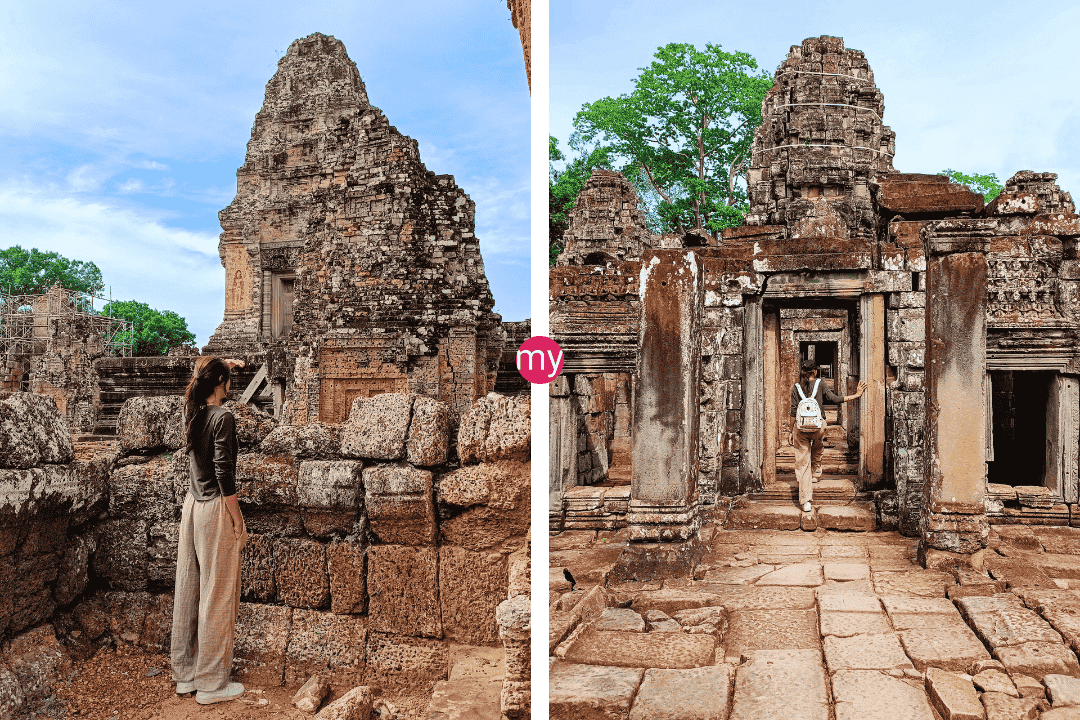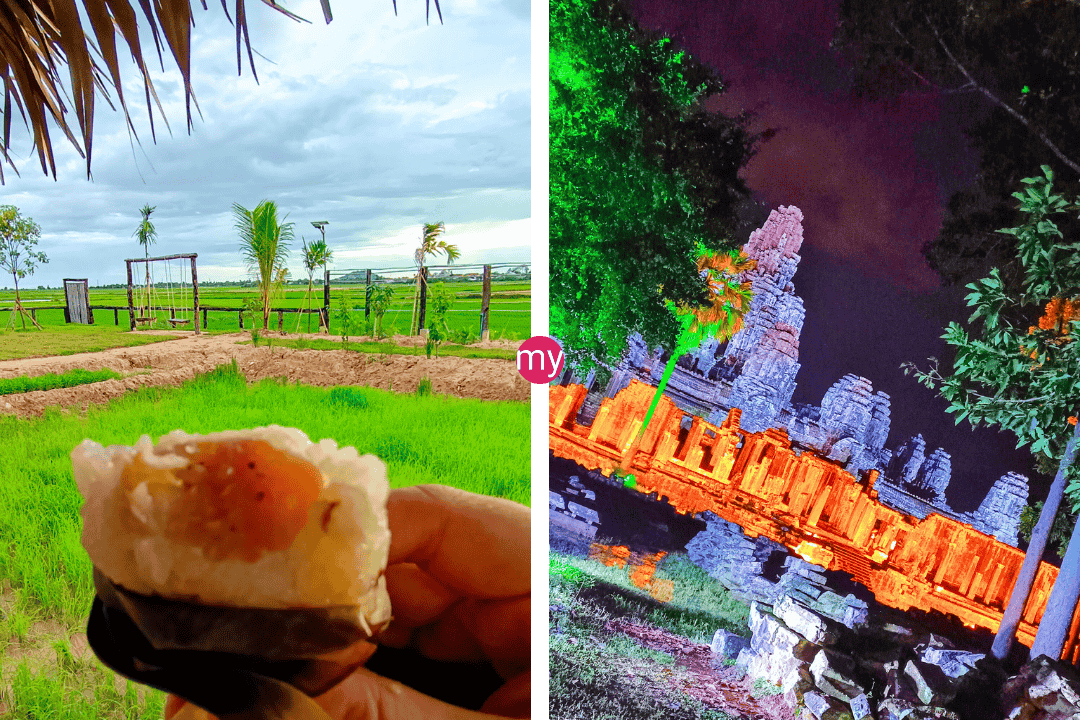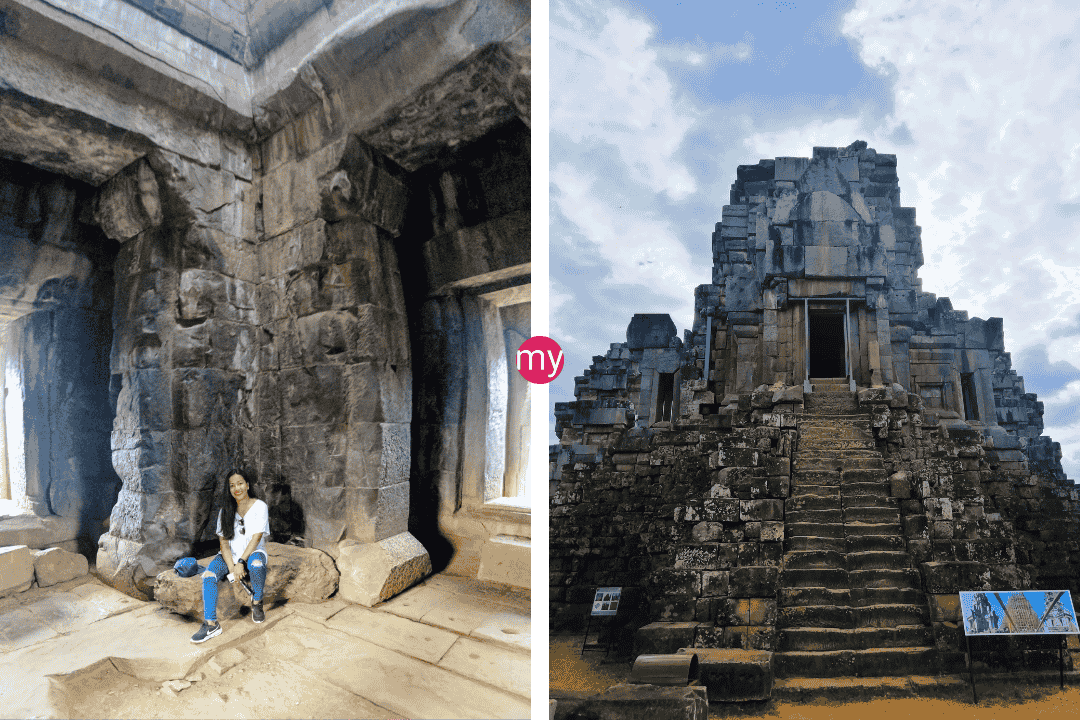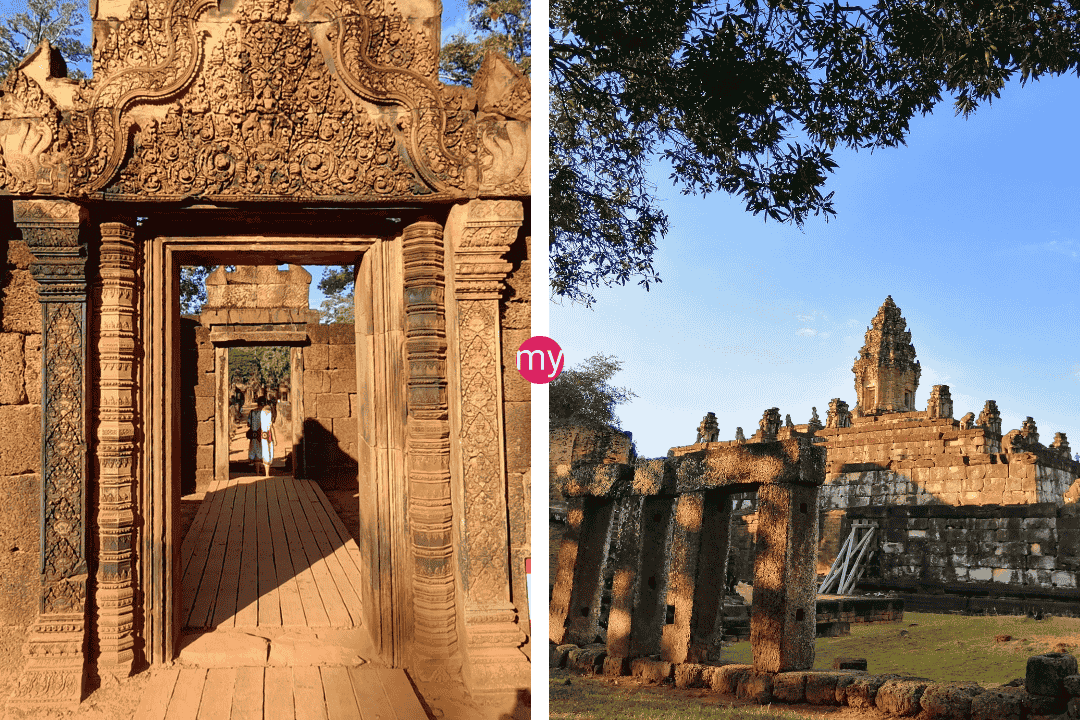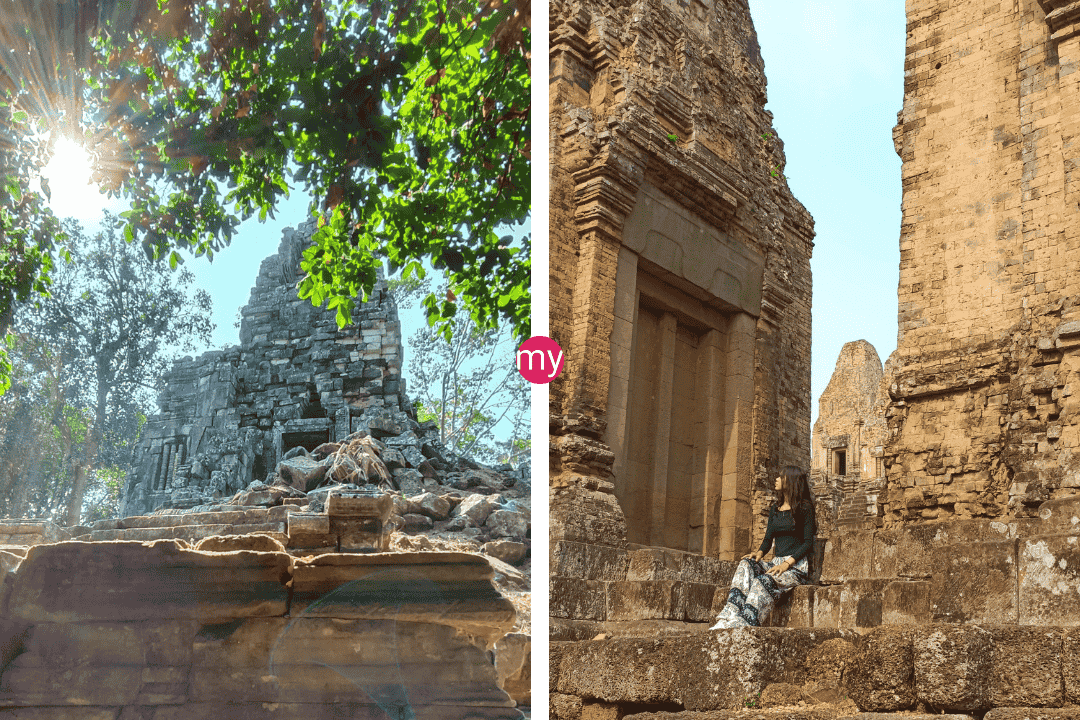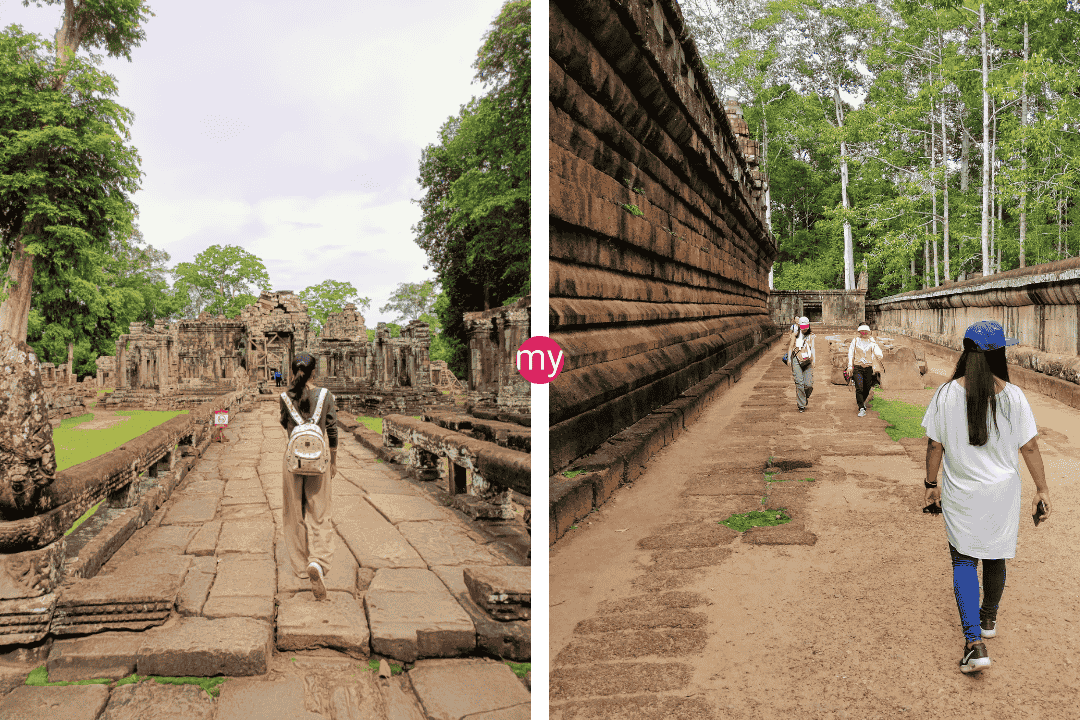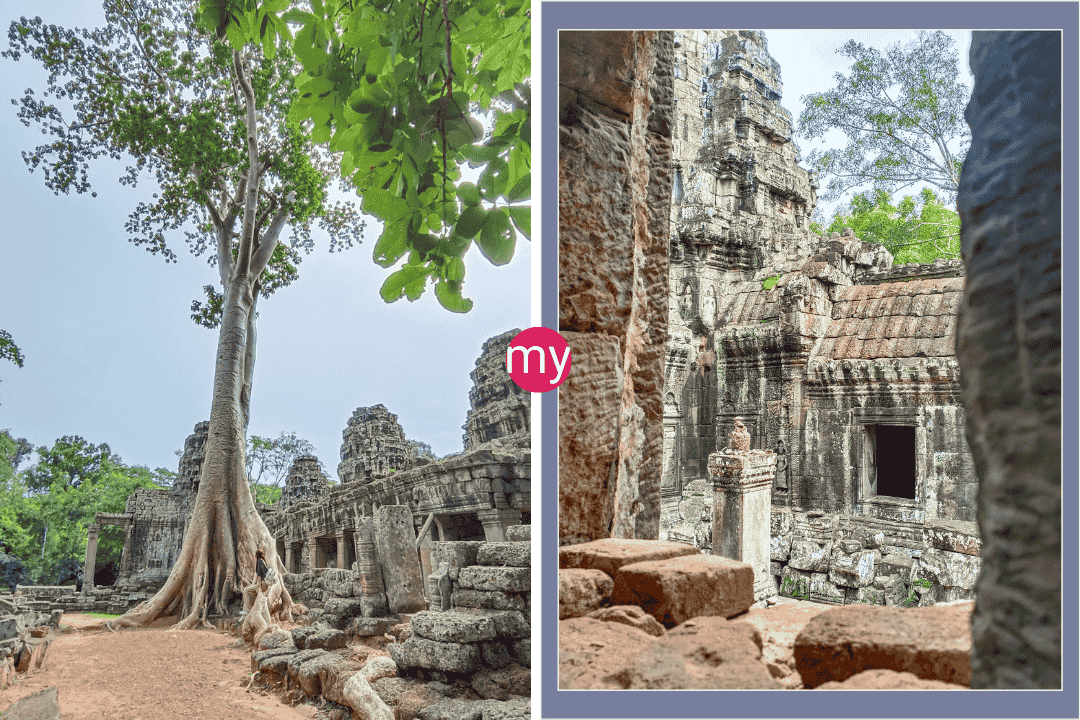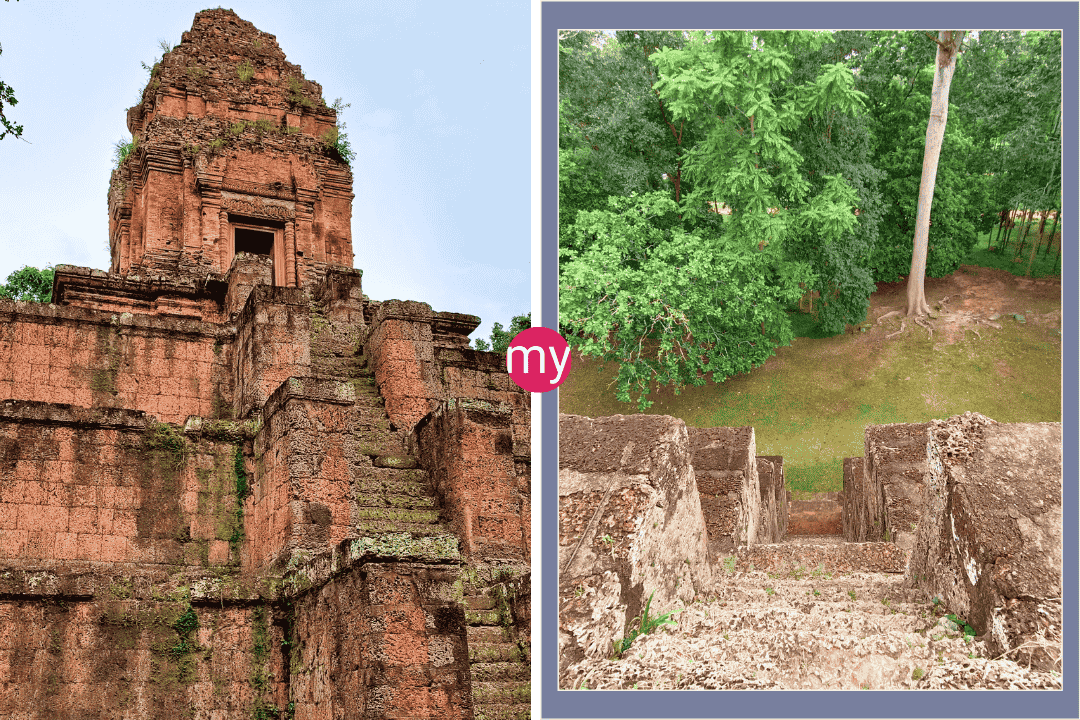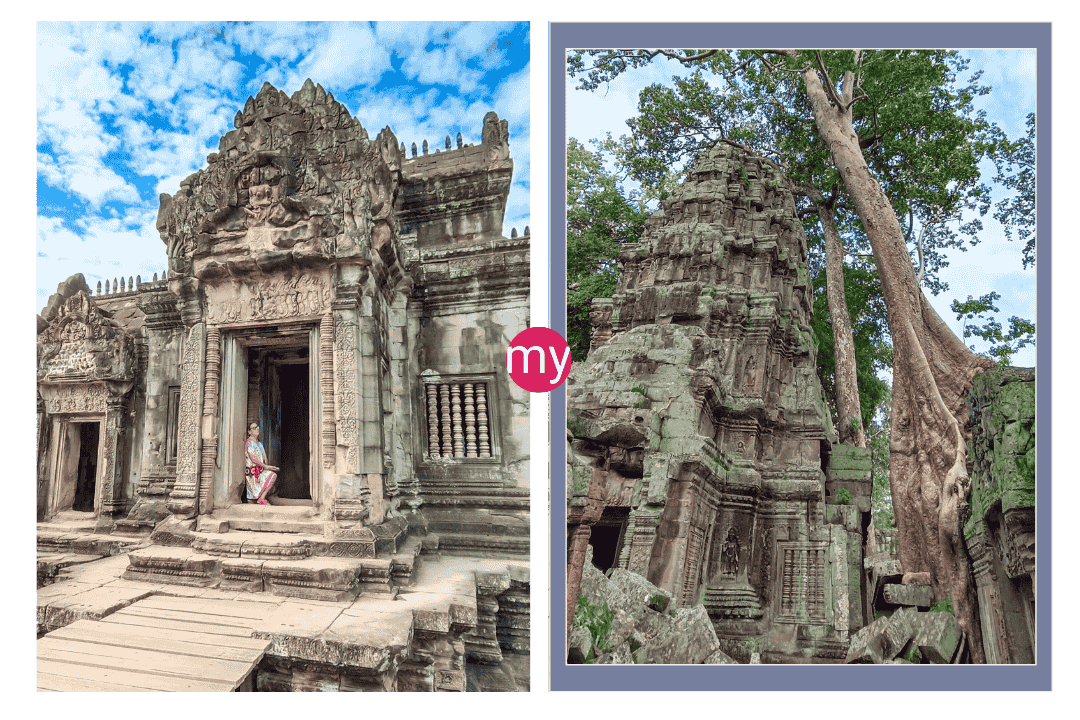Preah Khan vs. Banteay Kdei: How Preah Khan and Banteay Kdei Mysteriously Came to Rise and Fall in the Cambodian Jungle
Core Question: For travelers considering visiting Preah Khan and Banteay Kdei, what are the key facts to weigh and differences to understand between these two Angkor temples?
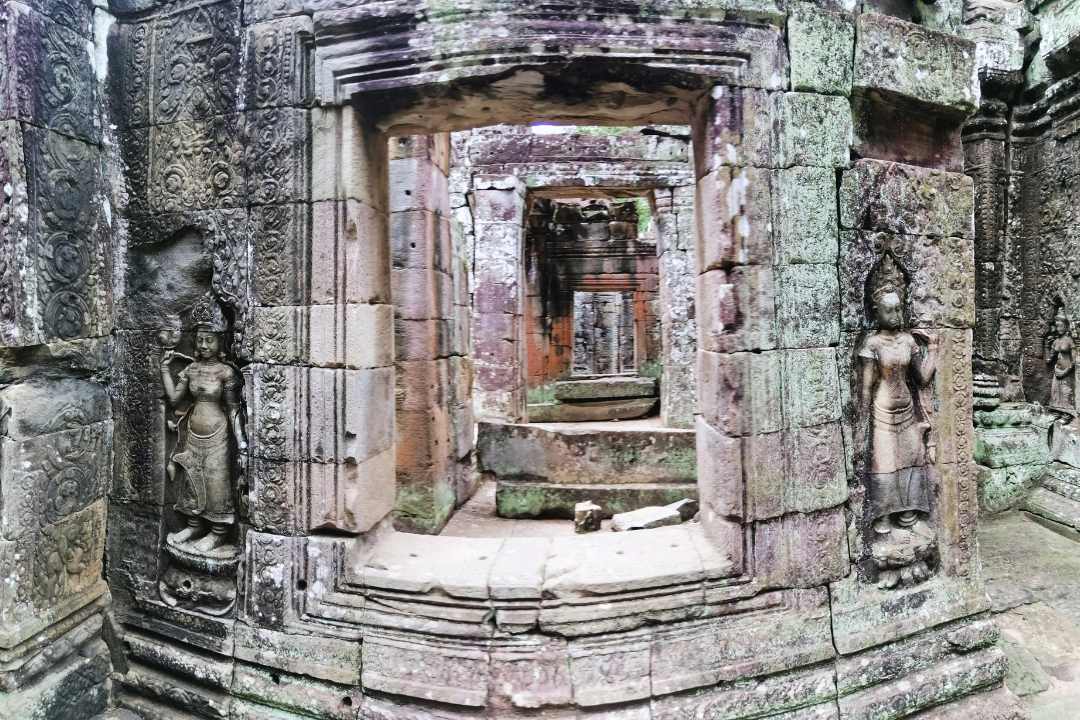
Nestled deep in the lush Cambodian jungle lie two ancient temple complexes with an aura of mystery – Preah Khan and Banteay Kdei. As you traverse the winding pathways and crumbling corridors of these 12th-century structures, you can’t help but wonder – what secrets do these mystical ruins hold?
In this blog, we’ll explore and compare the origins, architecture, and allure of Preah Khan and Banteay Kdei to uncover the fascinating histories of these two jungle temples.
Get quickly oriented on what sets these temples apart:
- Size & Scale: Preah Khan is sprawling (148,000 sq meters), Banteay Kdei more intimate (97,000 sq meters)
- Purpose: Preah Khan was an administrative complex, Banteay Kdei housed monks and scholars
- Architecture: Preah Khan has Hindu-Buddhist elements, Banteay Kdei is classic Buddhist Khmer style
- Restoration: Preah Khan is partially jungle-covered, Banteay Kdei was extensively restored
Digging deeper on origin stories and allure:
- What eras did they emerge in and who commissioned them?
- What religious, scholarly, and political functions did they serve?
- What can the distinctive architectural details reveal?
- Why do they continue intriguing travelers through the centuries?
To enrich your temple explorations, MySiemReapTours offers guided private tours led by experts sharing insights on Khmer history, spiritual practices, and more within these complexes. Prepare to wander through time!
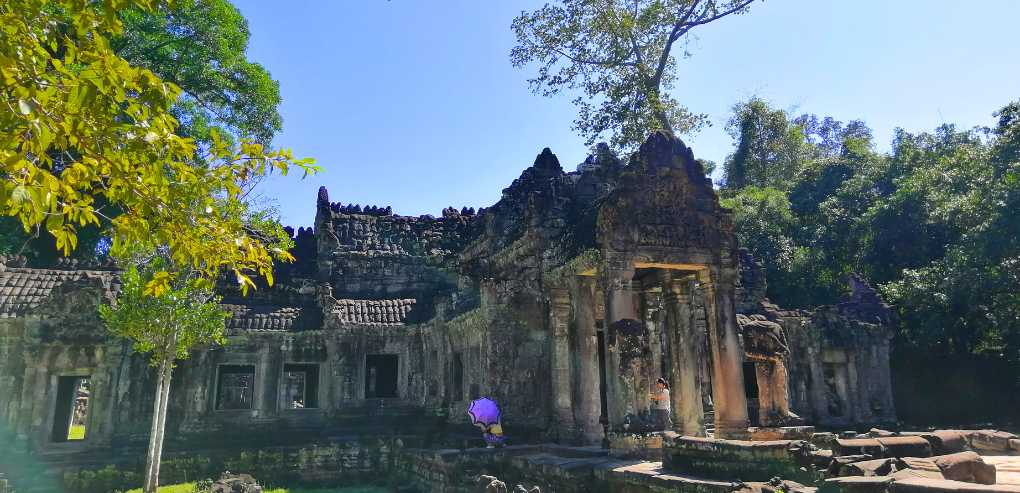
An Overview of Preah Khan and Banteay Kdei
Preah Khan and Banteay Kdei may share similarities as Angkor-era monuments, but they each have unique characteristics that set them apart.
Size and Scale
- Preah Khan is a sprawling complex covering 148,000 square meters with a maze of enclosures and passages.
- Comparatively smaller, Banteay Kdei occupies an area of 97,000 square meters.
Purpose and Dedication
- Preah Khan was dedicated to the king’s father and served religious as well as administrative functions.
- Banteay Kdei housed a Buddhist monastery and libraries for monks and scholars.
Architectural Details
- Preah Khan combines both Buddhist and Hindu iconography in its intricate bas-reliefs and carvings.
- Banteay Kdei showcases classic Khmer-style Buddhist motifs throughout its structures.
Restoration Status
- Large sections of Preah Khan remain covered in jungle foliage, adding to its aura of faded glory.
- Banteay Kdei underwent extensive restorations, although many weathered stones still hint at its age.
Clearly, while sister monuments of an empire long passed, Preah Khan and Banteay Kdei have their own ambience and archaeology that deserve to be explored first-hand.
In-depth analysis:
Preah Khan, with its magnificent rooms and gardens, is larger than Banteay Kdei. It honors the king’s father and was built in the 12th century.
Banteay Kdei, a smaller 12th-century building, is called the “Citadel of Monks’ Cells.”
This Buddhist temple in Preah Khan’s design is secluded and mysterious, making it a hidden gem for regional explorers.
What is the background of Preah Khan and Bantay Kedei?
The Angkor Archaeological Park’s Preah Khan and Banteay Kdei temples are near Siem Reap. Preah Khan, a larger 12th-century shrine, is known for its many halls and gardens.
Construction began during King Jayavarman VII’s reign and is dedicated to the king’s father. Banteay Kdei, a modest 12th-century temple, is called the “Citadel of Monks’ Cells.”
The Buddhist temple, erected by Jayavarman VII, is a hidden gem for visitors due to its excellent design, overgrown ruins, and relative peace.
Both temples are examples of Khmer architecture and religious influence.
Which temple is more popular among tourists?
The search results did not indicate visitor interest in Preah Khan and Banteay Kdei temples.
Based on existing knowledge, it is difficult to establish which temple is more visited.
Temple appeal depends on historical significance, architectural beauty, religious value, and cultural relevance.
Preah Khan and Banteay Kdei are popular Cambodian historical and archeological sites due to their unique features and cultural significance.
When is the ideal time to visit Preah Khan and Bantay Kdei?
Preah Khan and Banteay Kdei are best visited early morning or late afternoon to avoid crowds and enjoy sunrise or sunset.
Cambodia’s hot and humid climate makes these hours more pleasant. Banteay Kdei can be visited year-round, but the dry season (December–February) has lots of sunny days, making it excellent.
A temple pass is needed to visit Preah Khan and Banteay Kdei in the Angkor Archaeological Park.
How long does it take to visit Preah Khan and Bantay Kdei?
The average visit to Preah Khan and Banteay Kdei takes an hour.
Both temples are smaller than other of the Angkor Archaeological Park’s highlights, so visitors can explore them quickly.
The tour’s duration depends on the visitor’s interest in the temples’ history and architecture.
The best time to visit these temples is early morning or late afternoon to avoid crowds and enjoy nice lighting.
The Construction and Patronage of Preah Khan
The founding of Preah Khan dates back to 1191 AD in the Medieval Khmer Empire under the rule of King Jayavarman VII. Constructed as a dedication to the king’s father, Indravarman I, this Hindu and Buddhist temple complex was one of the largest city-temples ever built in Angkor region.
Preah Khan served dual religious and administrative purposes:
- The central towers and shrines performed ceremonial functions with daily offerings and rituals guided by Hindu priests and Buddhist monks.
- The outer enclosures housed over 1000 officials, dancers, priests and servants who managed affairs of state and temple activities.
At the height of its glory, Preah Khan was a vibrant hive of activity with high-walled enclosures extending over 148,000 square meters. The epic scale and hybrid Hindu-Buddhist iconography distinguish Preah Khan‘s architecture.
Banteay Kdei: The Mysterious Monastery Temple
Constructed by Jayavarman VII in the late 12th century, Banteay Kdei occupies a peaceful spot nestled between the temples of Ta Prohm and Srah Srang. While its name translates to “Citadel of Monks’ cells”, much mystery surrounds Banteay Kdei‘s original purpose and the monks that once resided within its walls.
Architecturally, Banteay Kdei exemplifies classic Khmer style evident in its:
- Sprawling enclosure walls with gopura entrance pavilions
- Intricately carved galleries, libraries, shrines and monk cells
- Towering spires and dramatic naga causeways lined with Buddha images
Despite Banteay Kdei‘s smaller size compared to Preah Khan, an extensive restoration revealed much of the temple’s splendor. Yet many weathered bas-reliefs still await discovery, reminding us that Banteay Kdei‘s story is still being unveiled, one fallen stone at a time.
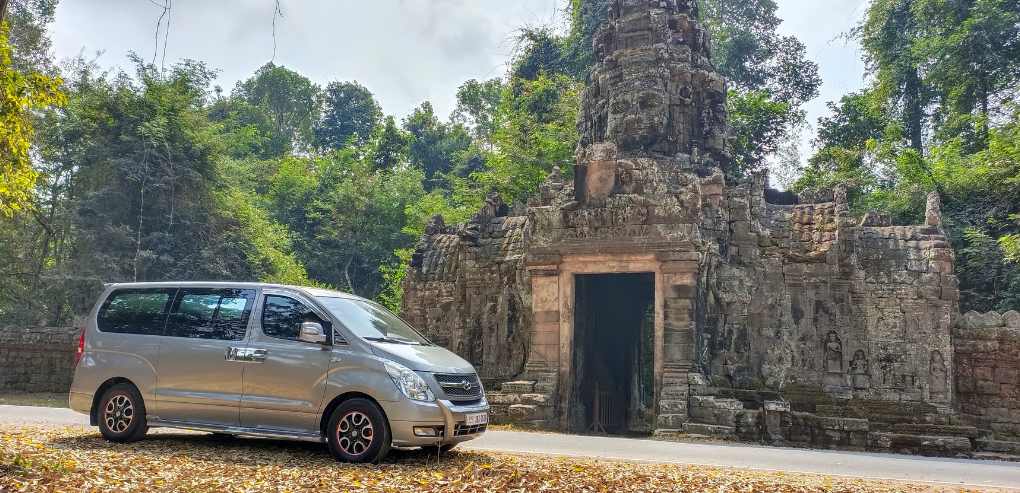
Why Visit Preah Khan and Banteay Kdei?
Beyond their beguiling beauty, Preah Khan and Banteay Kdei offer more reasons to visit these enigmatic jungle temples:
Adventure Through Sprawling Complexes
- With over 240 meters in length, navigating Preah Khan‘s enclosures feels like an Indiana Jones adventure.
- At Banteay Kdei, go off-path and discover hidden corridors behind crumbling walls.
Gaze Upon Exquisite Bas-Reliefs
- Preah Khan boasts some of Angkor region’s finest bas-reliefs depicting scenes from Hindu epics.
- Banteay Kdei surprises with delicate Buddha carvings along its galleries.
Experience Shows of Light and Sound
- At dawn, Preah Khan‘s sandstone towers glow gold as monkeys call from the forest canopy.
- In the afternoon, Banteay Kdei‘s inner sanctums fall silent save for the occasional bird song.
Wander Into the Lost World
- Lush foliage and jungle vines reclaiming Preah Khan create a landscape frozen in time.
- Hollow halls wrapped in gnarled roots make Banteay Kdei feel hauntingly beautiful.
Final Verdict: Which Temple Wins?
While no competition exists between these two majestic temples, Preah Khan wins when comparing architectural magnificence and scale.
However, those seeking a more intimate sanctuary will find charm in Banteay Kdei‘s graceful structures nestled among verdant forest.
Ultimately, visiting both allows you to fully appreciate the diversity of Angkor’s temples – as well as the kings and craftsmen who created these marvels centuries ago. Their enduring legacy continues to captivate, all within the vibrant jungle that reclaimed these once vibrant monuments.
So come and explore for yourself to unfold the tales etched in stone across mystical Preah Khan and enigmatic Banteay Kdei! Our private Angkor small circuit tours allow you to experience the magic of these temples with expert local guides.
In the end, no matter which temple you prefer, Preah Khan and Banteay Kdei represent the ingenuity and artistry of Angkor-era craftsmen. Wandering these crumbling corridors elicits a sense of wonder at the grandeur of Khmer civilization while also revealing that many mysteries still await within these jungle-clad structures.
As we preserve and study these monuments, they continue teaching us about arts, culture and belief systems linking our shared human heritage across the centuries.
Featured
Explore more on My Siem Reap Tours
Koh Ker and Beng Mealea guided tour | Banteay Srei temple tour semi-private guided tour | Angkor Wat Sunrise shared tour | Koh Ker and Beng Mealea guided tour | Morning Siem Reap floating village tour | Afternoon Siem Reap floating village tour | Private Angkor Wat special tour | Kulen Waterfall small group guided Tour | Private Angkor Wat mix temples photo tour
